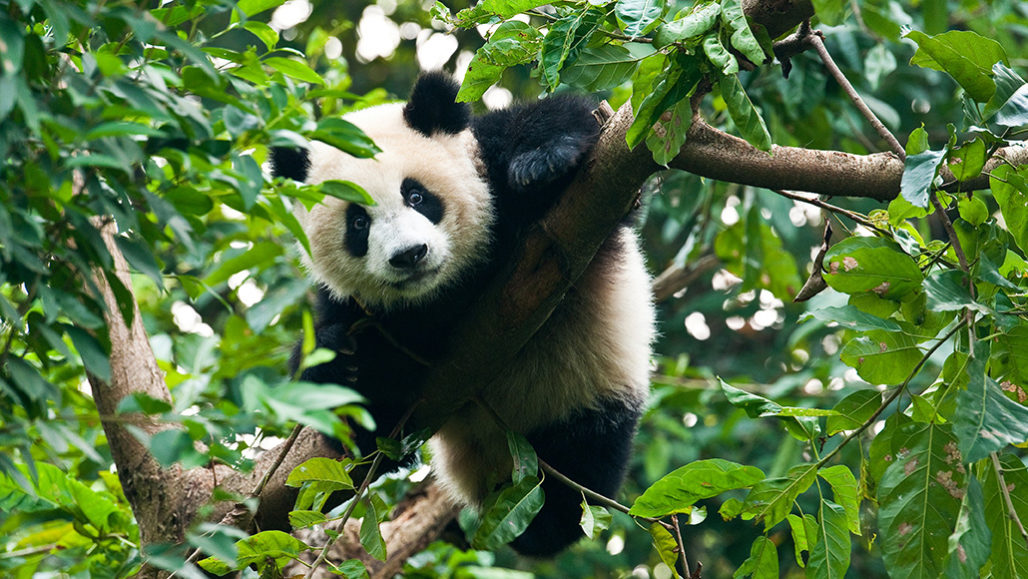Pandas use their heads as a kind of extra limb for climbing
Short legs on a chubby body require a work-around when it comes to getting up a tree

The chubby body proportions of a panda require an unusual work-around for climbing trees.
Hung_Chung_Chih/iStock/Getty Images Plus
By Susan Milius
AUSTIN, Texas — Pandas really use their heads to climb.
As the pudgy, short-legged bear climbs, it presses its head briefly against the tree trunk again and again. The head serves as a make-do extra paw. A panda presses its head first against one side of the tree and then against the other. This extra contact helps the bear hold on as it releases and raises a true paw. Andrew Schulz described this behavior at a meeting on January 4. Schulz is a physicist at Georgia Tech in Atlanta. He spoke at the annual meeting of the Society for Integrative and Comparative Biology.
Schulz knows of similar behavior only in newborn kangaroos. They use their heads to help haul themselves to their mother’s pouch for the first time.
Head moves make sense for panda proportions, said Schulz. He spoke on behalf of a research collaboration. It was between his university and China’s Chengdu Research Base of Giant Panda Breeding. Pandas have the shortest leg-to-body ratio among the world’s eight living bear species. “I like to call them Corgi bears,” he says. (Pembroke Welsh Corgis are a breed of dog with very short legs.)
Scientists have often studied the ways small animals, such as squirrels, climb. But pandas and other big mammals have not gotten the same attention, Schulz said. Tree climbing is important for pandas. Rushing up a tree can save a wild panda from attacks by wild dogs.
Chengdu researcher James Ayala had the idea for the study. He says these are the first measurements of how well young pandas climb. Such data help researchers see if young pandas are ready for life in the wild. Some pandas raised at the Chengdu facility will eventually be released into the wild.
For this study, the Chengdu staff built a panda climbing gym. It had four bark-stripped tree trunks. Each had a different diameter and held up a high platform. Researchers videotaped eight young pandas, all at least a year old. The animals had grown beyond the waddling fluffball stage. They were young teenagers with a bit of growing left to do, and sometimes a lot of learning.
Some youngsters just didn’t get the tree thing. “No controlled ascent or descent. It was kind of madness every single time,” Schulz said of one young bear.
Others caught on. One reaching the pole top in nine of 11 attempts. The most successful climbers moved their heads roughly four times more than those who flubbed the poles, Schulz said. Even one female born without claws made it up the pole. The head press improves the panda grip. It also keeps a panda’s weight safely balanced close to the tree.
Head-climbing looks familiar to Nicole MacCorkle. She’s a giant panda keeper at Smithsonian’s National Zoo in Washington, D.C. She wasn’t at the meeting, but she has seen video from the Chengdu climbing tests. The zoo pandas tackle trees this way too, she says.
For cubs, heading up is sometimes the easy part. “They’ll climb up fairly quickly into a tree,” MacCorkle says. Then, she adds, “It seems like they can’t quite figure out how to get back down.” If cubs stay stuck too long, a keeper will come to the rescue. However, she notes, “Typically they work it out for themselves.”







